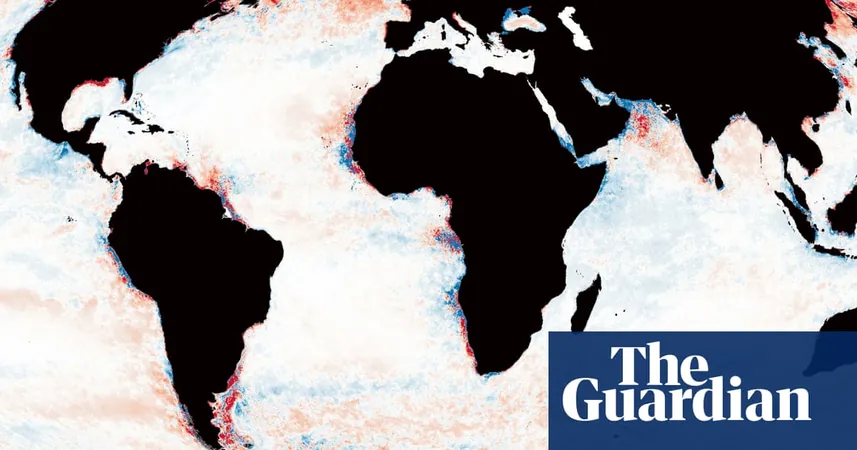
Dark Oceans: Are Our Seas in Trouble?
2025-05-27
Author: Jia
A startling new study reveals that vast regions of our oceans have plunged into darkness over the last two decades, raising alarm bells among scientists about the dire consequences for marine ecosystems worldwide.
Researchers employing satellite data and advanced modeling techniques reported that more than 20% of the global ocean has darkened from 2003 to 2022. This alarming trend reduces the areas where marine life, which depends on sunlight, can thrive.
This darkening spans an astonishing 75 million square kilometers—an area larger than Europe, Africa, China, and North America combined! Most marine species inhabit this critical upper layer of water, where approximately 90% of ocean life is found.
Dr. Thomas Davies, a marine conservationist at the University of Plymouth, described the findings as a "genuine cause for concern." He emphasized the potential catastrophic effects on marine ecosystems, global fisheries, and the essential processes of carbon and nutrient cycling in the oceans.
Marine life predominantly flourishes in the photic zones—the sunlit upper layers where light penetrates the water. Although sunlight can reach depths of nearly a kilometer, effective photosynthesis typically occurs within the first 200 meters. This upper layer is home to phytoplankton, microscopic organisms that serve as the foundation of marine food webs and produce nearly half of the Earth's oxygen.
Using satellite data, researchers calculated the depths of these photic zones, revealing that 21% of the world's oceans had darkened over the past two decades. In some areas, key photic zones dropped by 50 to 100 meters, as outlined in the journal Global Change Biology.
The underlying causes of this oceanic darkening are multifaceted. While coastal regions often darken due to nutrient-rich upwellings and rainfall runoff, deeper offshore areas face less understood influences. Global warming and shifting ocean currents are believed to be significant factors in this unsettling transformation, especially noted in regions like the Southern Ocean and areas influenced by the Gulf Stream.
Interestingly, despite the overall darkening trend, about 10% of the ocean (37 million square kilometers) has actually become lighter. For instance, the waters off the west coast of Ireland have brightened significantly, although deeper areas continue to darken.
Dr. Davies warned that ocean darkening disrupts vital life processes: "Marine organisms rely on light for hunting, mating, and reproductive timing. As regions darken, they are forced to ascend towards the surface, facing overcrowding and reduced habitat."
Prof. Oliver Zielinski from the Leibniz Institute for Baltic Sea Research in Germany echoed this concern, labeling the darkening oceans a "worrying trend." He highlighted that such changes threaten marine food webs, alter species distributions, and undermine the ocean's ability to support biodiversity and regulate climate.
Given that coastal seas, close to human activity, are especially at risk, their resilience is vital for both ecological health and human survival. The clock is ticking, and if we don't pay attention to these signs, we may be facing a future where our oceans—and the life they support—are irreparably changed.



 Brasil (PT)
Brasil (PT)
 Canada (EN)
Canada (EN)
 Chile (ES)
Chile (ES)
 Česko (CS)
Česko (CS)
 대한민국 (KO)
대한민국 (KO)
 España (ES)
España (ES)
 France (FR)
France (FR)
 Hong Kong (EN)
Hong Kong (EN)
 Italia (IT)
Italia (IT)
 日本 (JA)
日本 (JA)
 Magyarország (HU)
Magyarország (HU)
 Norge (NO)
Norge (NO)
 Polska (PL)
Polska (PL)
 Schweiz (DE)
Schweiz (DE)
 Singapore (EN)
Singapore (EN)
 Sverige (SV)
Sverige (SV)
 Suomi (FI)
Suomi (FI)
 Türkiye (TR)
Türkiye (TR)
 الإمارات العربية المتحدة (AR)
الإمارات العربية المتحدة (AR)